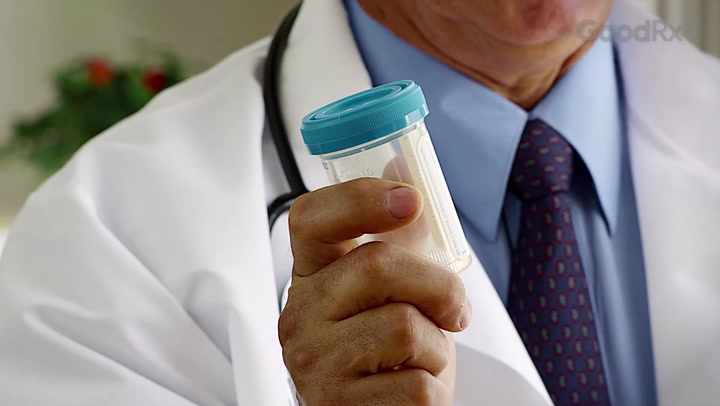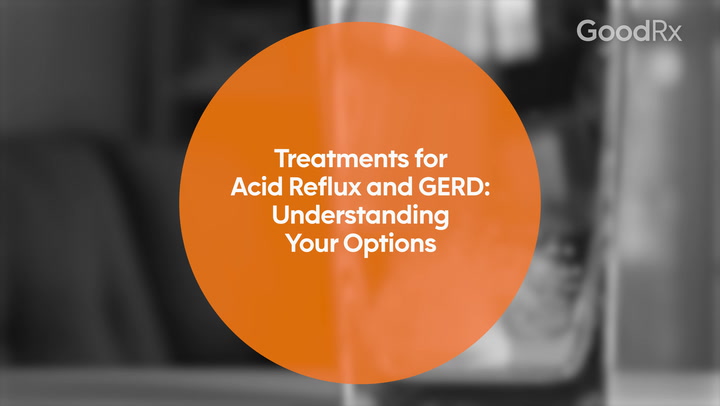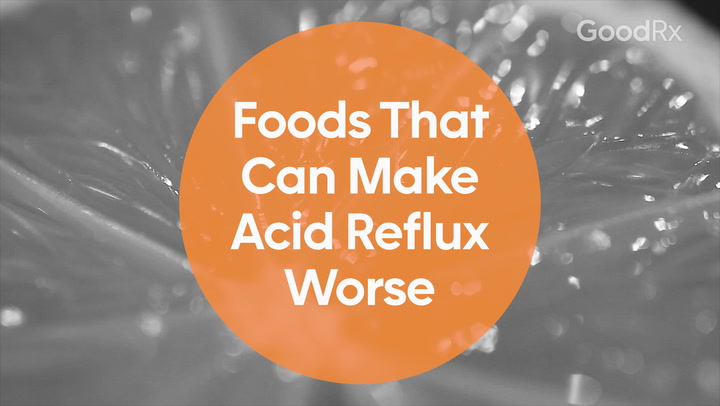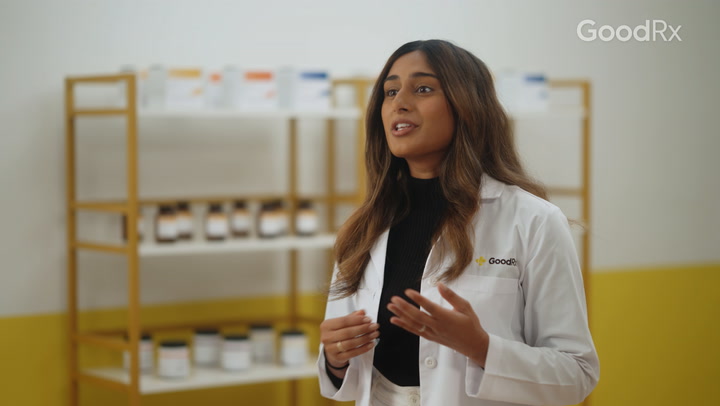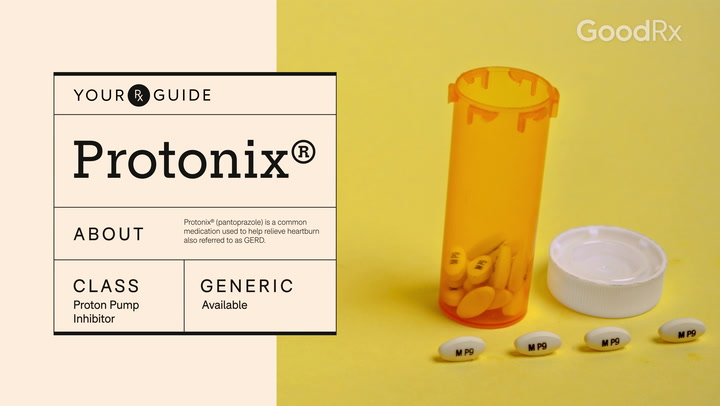
Esomeprazole (Nexium) vs. Omeprazole (Prilosec): 7 Things to Know When Comparing These PPIs
Key takeaways:
Esomeprazole (Nexium) and omeprazole (Prilosec, Prilosec OTC) belong to a group of medications called proton pump inhibitors (PPIs). They’re both effective medications for gastroesophageal reflux disease (GERD).
Esomeprazole may have stronger acid-lowering effects compared with omeprazole. But for many people, this doesn’t make a significant difference. And experts don’t generally recommend one PPI over another.
Both esomeprazole and omeprazole cause similar mild side effects, such as headache, nausea, and diarrhea. But omeprazole interacts with more medications than esomeprazole does.
Esomeprazole and omeprazole are both available as lower-cost generics. GoodRx can help you save over 95% off the average retail price at certain pharmacies.
Access savings on related medications
Table of contents

Heartburn. Acid reflux. Gastroesophageal reflux disease (GERD). These digestive conditions are uncomfortable. And many people turn to proton pump inhibitors (PPIs) to help manage them.
Esomeprazole (Nexium, Nexium 24HR) and omeprazole (Prilosec, Prilosec OTC) are two PPIs that treat GERD. Though their names are similar, esomeprazole and omeprazole are not the same. Both medications work well for GERD, but is one preferred over the other? Below, we cover seven things to keep in mind when comparing esomeprazole versus omeprazole.
1. Esomeprazole and omeprazole have different dosage forms available
Both esomeprazole and omeprazole are available over the counter (OTC), as well as with a prescription. But they have slightly different dosage forms available.
All esomeprazole and omeprazole formulations are delayed-release products. This means that the medication is released in the intestines, not the stomach. This prevents the stomach from breaking the medication down before it can have the desired effect.
The table below shows the different OTC and prescription dosage forms that are available for esomeprazole and omeprazole.
| Esomeprazole (Nexium, Nexium 24HR) | Omeprazole (Prilosec, Prilosec OTC) | |
|---|---|---|
| OTC dosage forms |
|
|
| Prescription dosage forms | Capsules:
Granule packets*:
|
Capsules:
Granule packets*:
|
*Granule packets are mixed with water at home to make a suspension (liquid) that you drink.
2. Esomeprazole and omeprazole work the same but have different active ingredients
Esomeprazole and omeprazole aren’t the same medication. But they work the same way.
When does omeprazole (Prilosec) start working? Find out how long it takes omeprazole to work and when you may start feeling relief.
Can probiotics help gastroesophageal reflux disease (GERD)? Learn what the research says about taking probiotics for GERD and heartburn.
Rapid reflux relief. Learn which home remedies and over-the-counter medications provide quick heartburn relief and when to seek medical care for symptoms that don’t go away.
PPIs block an enzyme (protein) that helps the stomach make acid. This enzyme is called the “proton pump.” By blocking the proton pump, PPIs prevent the stomach from making too much acid. This is helpful because symptoms of GERD (such as heartburn) are a result of excess acid in the stomach.
Chemically, omeprazole and esomeprazole are very similar. In fact, esomeprazole is derived from omeprazole.
Think of omeprazole like the wishbone of a turkey. Omeprazole is like looking at the wishbone as a whole. But if you break the wishbone in half, you get two separate chemicals: R-omeprazole and S-omeprazole (esomeprazole).
Read more like this
Explore these related articles, suggested for readers like you.
Your liver breaks down each chemical a bit differently. And this causes your body to absorb greater amounts of esomeprazole than R-omeprazole. But if you’re only taking esomeprazole, your body only has one chemical to focus on. This distinction may be why esomeprazole lowers stomach acid levels more than omeprazole (more on this later).
3. Esomeprazole and omeprazole have slightly different FDA-approved uses
For the most part, esomeprazole and omeprazole treat the same symptoms and conditions. But there are slight differences.
OTC versions of esomeprazole and omeprazole are FDA-approved for frequent heartburn in adults. Anyone can buy them without a prescription. But you shouldn’t take either of them for longer than 2 weeks unless a healthcare professional tells you otherwise.
Prescription esomeprazole is FDA-approved to:
Treat GERD
Treat erosive esophagitis (inflammation of the esophagus)
Maintain the healing of erosive esophagitis
Lower the risk of ulcers caused by nonsteroidal anti-inflammatory drugs (NSAIDs), such as ibuprofen (Advil, Motrin)
Treat Helicobacter pylori (H. pylori) infections
Treat Zollinger-Ellison syndrome and other conditions caused by excess acid production
Prescription omeprazole is approved to:
Treat GERD
Treat erosive esophagitis
Maintain the healing of erosive esophagitis
Treat stomach or intestinal ulcers
Treat H. pylori infections
Treat Zollinger-Ellison syndrome and other conditions caused by excess acid production
4. The ways you take esomeprazole and omeprazole are slightly different
It’s best to take esomeprazole or omeprazole on an empty stomach. But while you can take omeprazole 30 to 60 minutes before a meal, you should take esomeprazole at least 1 hour before eating. Taking either medication with food or too soon before eating can cause it not to work as well.
Specific dosages for esomeprazole and omeprazole vary based on the condition you’re treating and your response. Children’s dosages also depend on their age and body weight. Most people take esomeprazole or omeprazole once a day. But there are times your prescriber may recommend taking it twice a day.
Follow the directions on the OTC label or your healthcare professional’s guidance when taking esomeprazole or omeprazole.
5. Both are effective for GERD, but esomeprazole may work a little better for some people
Esomeprazole and omeprazole are both effective for treating GERD and erosive esophagitis. Most people experience similar symptom relief with either PPI. That’s why experts don’t recommend one over the other.
But there are some studies that suggest esomeprazole may work a little better than omeprazole:
An analysis of 15 studies found that esomeprazole was slightly more effective than omeprazole at healing erosive esophagitis after 8 weeks. But the researchers noted that these results likely wouldn’t make a significant difference for many people.
An analysis of four studies found that esomeprazole lowered stomach acid levels more than four other PPIs, including omeprazole, in people with GERD. But this study didn’t compare the levels of GERD symptom relief that people experienced.
Despite these studies, experts don’t consider one PPI to be better than the others. But everyone responds to these medications differently. So you may find that one works better for you than the other.
If you don’t feel any symptom improvement after taking a PPI for 2 weeks, let your healthcare professional know. They can let you know if you should switch or adjust your medications.
6. Esomeprazole and omeprazole have similar side effects
Esomeprazole and omeprazole have similar side effects. These are generally mild, especially if you’re only taking the medication short term. More serious side effects are rare and usually only happen if you take the medication long term.
Common side effects
The most common side effects of esomeprazole and omeprazole include:
Headache
Diarrhea
Nausea
Vomiting
Gas
Stomach pain
Constipation
Serious side effects
Taking esomeprazole or omeprazole for a long time may cause more serious side effects. Possible risks include:
Severe diarrhea caused by the bacteria Clostridioides difficile
Low vitamin B12 and magnesium levels
New or worsening lupus
A higher risk of lung infections, such as pneumonia
Serious skin reactions
7. Omeprazole interacts with slightly more medications than esomeprazole
In general, esomeprazole and omeprazole interact with the same medications. But omeprazole has slightly more interactions. This can be a reason a healthcare professional may recommend esomeprazole.
For instance, omeprazole interacts with diazepam (Valium) and phenytoin (Dilantin). It can raise the risk of side effects of these other medications. Esomeprazole isn’t known to cause significant problems with either of these medications.
Examples of medications that interact with both esomeprazole and omeprazole include:
Warfarin (Coumadin, Jantoven)
Clopidogrel (Plavix)
Methotrexate (Trexall)
Digoxin (Lanoxin)
Citalopram (Celexa)
St. John’s wort
This isn’t a complete list of interactions. Make sure to share your medication list with your healthcare team. This can help them discover and manage potential interactions.
What are some alternatives to omeprazole and esomeprazole?
There are a few available alternatives to omeprazole and esomeprazole:
For occasional heartburn, OTC antacids such as Tums (calcium carbonate) offer quick relief. But they don’t help prevent symptoms.
An OTC histamine-2 (H2) blocker, such as famotidine (Pepcid AC), can also be taken as needed for rapid acid reflux relief. It can also be taken daily to help prevent symptoms.
Voquezna (vonoprazan) is a potassium-competitive acid blocker that treats GERD, erosive esophagitis, and H. pylori infections. It’s a prescription-only medication that works faster and lasts longer than PPIs.
How to save on esomeprazole and omeprazole
Esomeprazole and omeprazole are available as both brand-name medications and lower-cost generics. GoodRx can help you navigate ways to save on your prescription.
Save with GoodRx. GoodRx can help you save over 95% off the average retail price of the generic versions of esomeprazole and omeprazole. Generic esomeprazole’s price at certain pharmacies is as low as $7.33 with a free GoodRx discount. Generic omeprazole’s price at certain pharmacies is as low as $5.88 with a free GoodRx discount.
Save with a copay savings card. If you have commercial insurance and meet eligibility requirements, brand-name Nexium’s price is as little as $15 if you use the manufacturer’s savings card.
Save with a coupon from the manufacturer. If you're purchasing brand-name Nexium without a prescription, the manufacturer has a $3 coupon available, which you can have emailed to you. Just present it at the register during your purchase.
The bottom line
Esomeprazole (Nexium) and omeprazole (Prilosec) are two similar proton pump inhibitors (PPIs). They’re both first-choice medications for treating gastroesophageal reflux disease (GERD). Neither esomeprazole nor omeprazole is recommended over the other.
Esomeprazole and omeprazole have similar side effects and interactions. They should also be taken before meals in order for them to work as expected. Your healthcare team can help you decide if one of these PPIs may be a better choice for you.
Why trust our experts?



References
Katz, P. O., et al. (2023). ACG clinical guideline: Guidelines for the diagnosis and management of gastroesophageal reflux disease. The American Journal of Gastroenterology.
Nguyen, P. A., et al. (2020). Meta-analysis of proton pump inhibitors induced risk of community-acquired pneumonia. International Journal for Quality in Health Care.
PharmGKB. (2021). Omeprazole and esomeprazole pathway, pharmacokinetics.
Röhss, K., et al. (2004). Esomeprazole 40 mg provides more effective intragastric acid control than lansoprazole 30 mg, omeprazole 20 mg, pantoprazole 40 mg and rabeprazole 20 mg in patients with gastro-oesophageal reflux symptoms. European Journal of Clinical Pharmacology.
Sandholdt, L. H., et al. (2014). Proton pump inhibitor-induced subacute cutaneous lupus erythematosus. British Journal of Dermatology.
Shin, J. M., et al. (2013). Pharmacokinetics and pharmacodynamics of the proton pump inhibitors. Journal of Neurogastroenterology and Motility.
Teng, M., et al. (2015). Meta-analysis of the effectiveness of esomeprazole in gastroesophageal reflux disease and Helicobacter pylori infection. Journal of Clinical Pharmacy and Therapeutics.
Turshudzhyan, A., et al. (2022). Rebuilding trust in proton pump inhibitor therapy. World Journal of Gastroenterology.
Wedemeyer, R.-S., et al. (2014). Pharmacokinetic drug interaction profiles of proton pump inhibitors: An update. Drug Safety.






